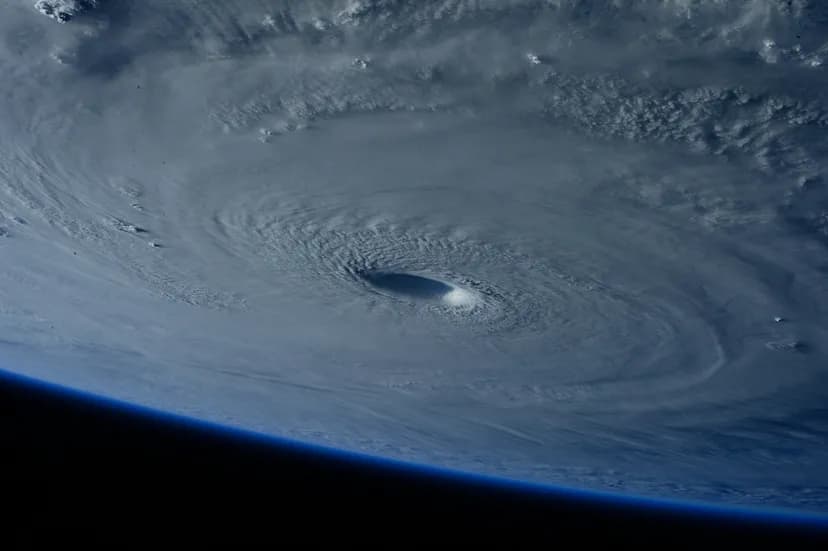The Statistics Behind 2024’s Hurricanes
Over the past century, a clear trend of increasing frequency and intensity of hurricanes has appeared. As we observe the formation process of hurricanes and the role of climate change in making hurricane-favorable conditions, it is no surprise that hurricanes have become stronger and more frequent in current years. Overall, statistics of increasing wind speeds, ocean temperatures, and climate-change-related data are all connected to the conclusion that climate change has significantly increased the frequency and intensity of Hurricanes.
The Statistics Behind 2024’s Hurricanes
As we observe our history with hurricanes, a clear trend emerges with more current years hosting stronger and stronger hurricanes. Examining weather patterns over the past century reveals that this pattern of increasing frequency and intensity of hurricanes is detrimental to the environment. Let’s look at the factors and statistics that have contributed to this increase in Hurricanes.
What Causes A Hurricane?
Hurricanes form over the ocean, often near the Earth’s equator and in tropical areas. These destructive storms form as low-pressure areas moving through the humid tropics, intensifying thunderstorm activity as it passes. As these storms continue to move westward, low-pressure areas begin to form below the storms. The warm ocean air is pulled into the storms, where it rises and cools rapidly, leading to the formation of clouds and thunderstorms. This process exacerbates the severity of these storms as water condenses and forms droplets which release more heat that fuels the storm.
Once wind speeds within these storms reach 74 mph, they are classified as a hurricane: defined as “a rotating, organized system of clouds and thunderstorms that originates over tropical or subtropical waters and has closed, low-level circulation.”
The Statistics
Wind Speeds
Wind Speeds have been steadily rising in recent years, resulting in higher-category hurricanes overall. According to Climate Central, a nonprofit climate research group, the wind speeds of 2024’s 11 hurricanes increased by 9–28 mph, due to warmer waters up to 2.5 degrees Fahrenheit warmer than they were in the past. Between 2019 and 2023, wind speeds rose by an average of 18 mph, resulting in 30 hurricanes moving up by one category or higher on the Saffir-Simspon hurricane wind scale. This intensification is fueled by extra energy from warm waters as it condenses and changes form, resulting in wind speeds increasing at least 35 mph in less than 24 hours.
Temperature — Ocean Heat
Oceans soak up the heat trapped in the atmosphere by greenhouse gases. Due to increased greenhouse gasses from air pollution, our oceans have been steadily absorbing larger amounts of heat. Since 1971, 90% of the excess heat energy on Earth has been absorbed by oceans. This has caused the temperatures of the top 700 meters (or 2,300 feet) of water to rise by 1.5 degrees Fahrenheit since 1901. Scientists agree that the rate of warming for the top 6,500 feet of the ocean is approximately 40% higher than previously thought. These warmer surface water temperatures release more energy into storms as water condenses, resulting in stronger hurricanes overall.
Real Impact
Overall, hurricanes have increased in frequency and intensity due to these optimal conditions for formation. According to Climate Central, Hurricane Milton was able to reach Category 5 status due to exceptionally warm-ocean temperatures. Researchers estimate that climate change made Hurricane Milton’s explosion of destruction 400 to 800 times more likely. Similarly, Hurricanes Debby and Oscar would likely have not even turned into hurricanes and would’ve remained tropical storms had climate change not amplified storm wind speeds.
Recap
Over the past century, a clear trend of increasing frequency and intensity of hurricanes has appeared. As we observe the formation process of hurricanes and the role of climate change in making hurricane-favorable conditions, it is no surprise that hurricanes have become stronger and more frequent in current years. Hurricanes develop when low-pressure areas under thunderstorms pull more and more warm air into the storm. The air rapidly cools as it rises, condensing into clouds and thunderstorms, while releasing heat that exacerbates the storm. Once wind speeds reach 74 mph, the storm is categorized as a hurricane. Statistics of increasing wind speeds, ocean temperatures, and climate-change-related data are all connected to the conclusion that climate change has significantly increased the frequency and intensity of Hurricanes.
